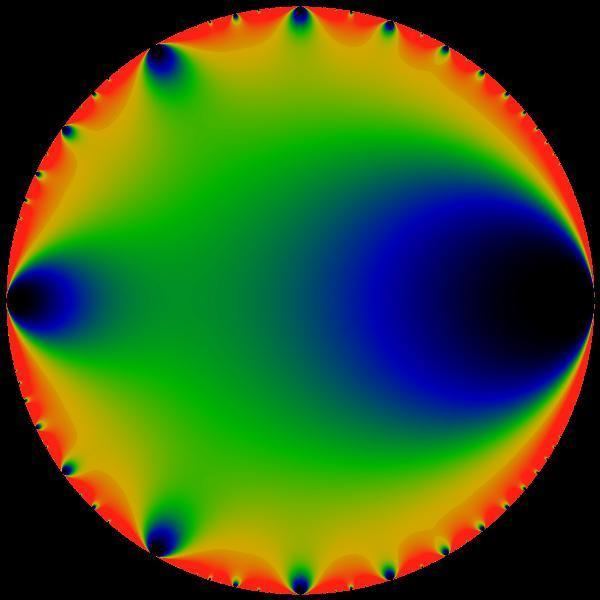 | ||
In mathematics, the Dedekind eta function, named after Richard Dedekind, is a modular form of weight 1/2 and is a function defined on the upper half-plane of complex numbers, where the imaginary part is positive.
Contents
Definition
For any complex number τ with Im(τ) > 0, let q = exp(2π i τ), and define the eta function by,
The notation
where Δ is the modular discriminant. The presence of 24 can be understood by connection with other occurrences, such as in the 24-dimensional Leech lattice.
The eta function is holomorphic on the upper half-plane but cannot be continued analytically beyond it.
The eta function satisfies the functional equations
More generally, suppose a, b, c, d are integers with ad − bc = 1, so that
is a transformation belonging to the modular group. We may assume that either c > 0, or c = 0 and d = 1. Then
where
Here
Because of these functional equations the eta function is a modular form of weight 1/2 and level 1 for a certain character of order 24 of the metaplectic double cover of the modular group, and can be used to define other modular forms. In particular the modular discriminant of Weierstrass can be defined as
and is a modular form of weight 12. (Some authors omit the factor of (2π)12, so that the series expansion has integral coefficients).
The Jacobi triple product implies that the eta is (up to a factor) a Jacobi theta function for special values of the arguments:
where
The Euler function
related to
Because the eta function is easy to compute numerically from either power series, it is often helpful in computation to express other functions in terms of it when possible, and products and quotients of eta functions, called eta quotients, can be used to express a great variety of modular forms.
The picture on this page shows the modulus of the Euler function: the additional factor of
Combinatoric identities
The theory of the algebraic characters of the affine Lie algebras gives rise to a large class of previously unknown identities for the eta function. These identities follow from the Weyl-Kac character formula, and more specifically from the so-called "denominator identities". The characters themselves allow the construction of generalizations of the Jacobi theta function which transform under the modular group; this is what leads to the identities. An example of one such new identity is
where
Special values
The above connection with the Euler function together with the special values of the latter, it can be easily deduced that
Eta quotients
Quotients of the Dedekind eta function at imaginary quadratic arguments may be algebraic, while combinations of eta quotients may even be integral. For example, define,
then,
and so on, values which appear in Ramanujan–Sato series.
